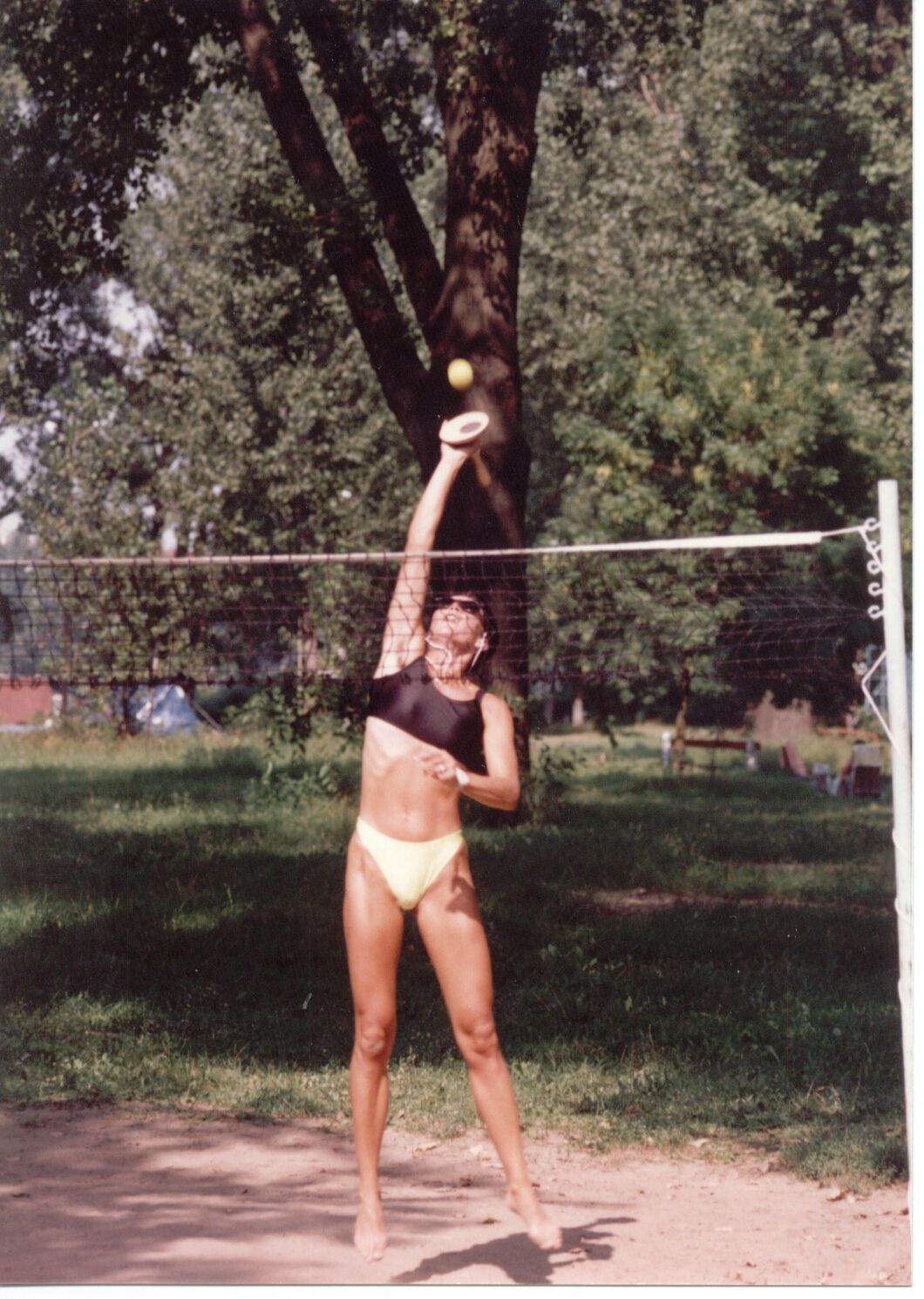I.7.4. Teaching the Turul Game
Categorisation of strokes:
Strokes can be distinguished according to side, height, direction, length and style.
- Side: forehand and backhand
- Height: low, medium and high
- Direction: straight, when it is parallel with the sidelines, and cross, when it is hit diagonally
- Length: short or long, drop, lift or drop-over
- Style: defensive or offensive strokes
Strokes used in the game:
The most frequent stroke in the Turul Game is the forehand. This stroke is the easiest to acquire, as the plate is close to the palm. In the case of a low straight stroke, the elbow has to be stretched for safe execution. It is a very common beginners’ mistake to bend the elbow while hitting the ball. The racket must constantly be held at the height of the head for medium and high strokes. From this position, the players can hit the ball to any direction.

Backhand strokes can be carried out in two ways. One is when the player returns the ball coming to the backhand side with a twisted grip but from the front. The other is when the player stands opposite the net and attempts to return the ball with a movement directed upwards. In case of a drop, the ball arrives directly behind the net. A lift can be used to save the ball and to start a new offensive.
Special strokes
Players uses slices, when they jump up close to the net and make a quick and offensive downward stroke. There are deceiving strokes, e.g. the lob, which are used at service on outdoor fields. Experienced players may also twist their strokes.
Singles tactics
The main objective of the tactics is to force the opponent, who is standing in the middle of the field, to move with different strokes so that the area is made free to safely hit the ball there and score a point. The basic position of the player is stable when the legs are spread, the knees are slightly bent and the trunk is also bent a bit forward. The hand holding the racket is as high as the head. In the modern, quick version of the game, there is no basic position, rather quick, tiny jumps from this position so that they can set off faster or react faster to unexpected, quick balls and attack back. Due to the features of the game and the grip type, every player has a backhand weakness, so its attack is an important part of the tactics. The defence of the backhand side forces the player to move closer to the side line. Players who prefer downward strokes stand closer to the net to score points by jumping up and hitting the ball downwards. Defensive players are closer to the baseline and hit higher to save the ball. Serves are parallel with the side lines or diagonal. The ball is sent over to the opponent’s side with a low or high stroke. In the beginning, it is recommended to use low straight strokes, but more skillful players can try high strokes, too. If possible, even the first stroke should go to the backhand side to cause a disadvantage to the opponent. In terms of tactics, the lob or towering serve is also beneficial, which is easy to carry out outdoors benefitting from natural, e.g. light conditions. In terms of tactics, this is the sport where service is not an advantage, but a disadvantage. This is the reason behind the rule that the player who lost the previous set shall serve. Players have to achieve that the opponent should serve, as, this way, they can await the returned ball in a better position and can make offensive strokes or strokes that force the opponent to move. Significant dexterity is required to maintain the ball in the air and to be able to attack back. Longer rallies improve the players’ sense of the ball and result in amusing quick games. Turul requires a lot of movement, and, apart from the rallies, the use of the tactics also help the players’ development and make the game even more enjoyable.
Doubles
Doubles are also played on a 5x5-meter field, where the positions are not fixed. Players should keep the appropriate distance and play in order to prevent the ball from falling on their respective areas. The players can stand beside or behind each other, but, in every case, only one player can touch the ball at a time and hit it over the net. During serves, the partner has to defend the whole area until the server arrives back to their territory. In this case, the receiver directs the ball towards the server or can initiate a drop to the side. Mixed doubles games are similar and do not differ in tactics, either.